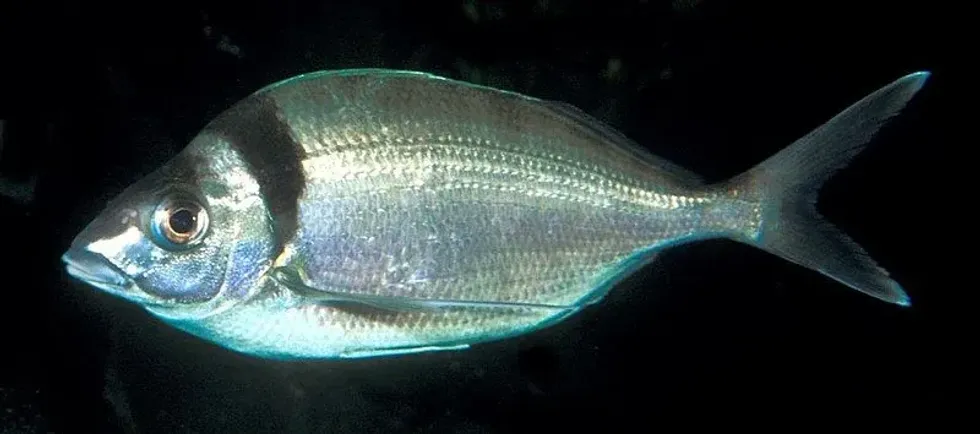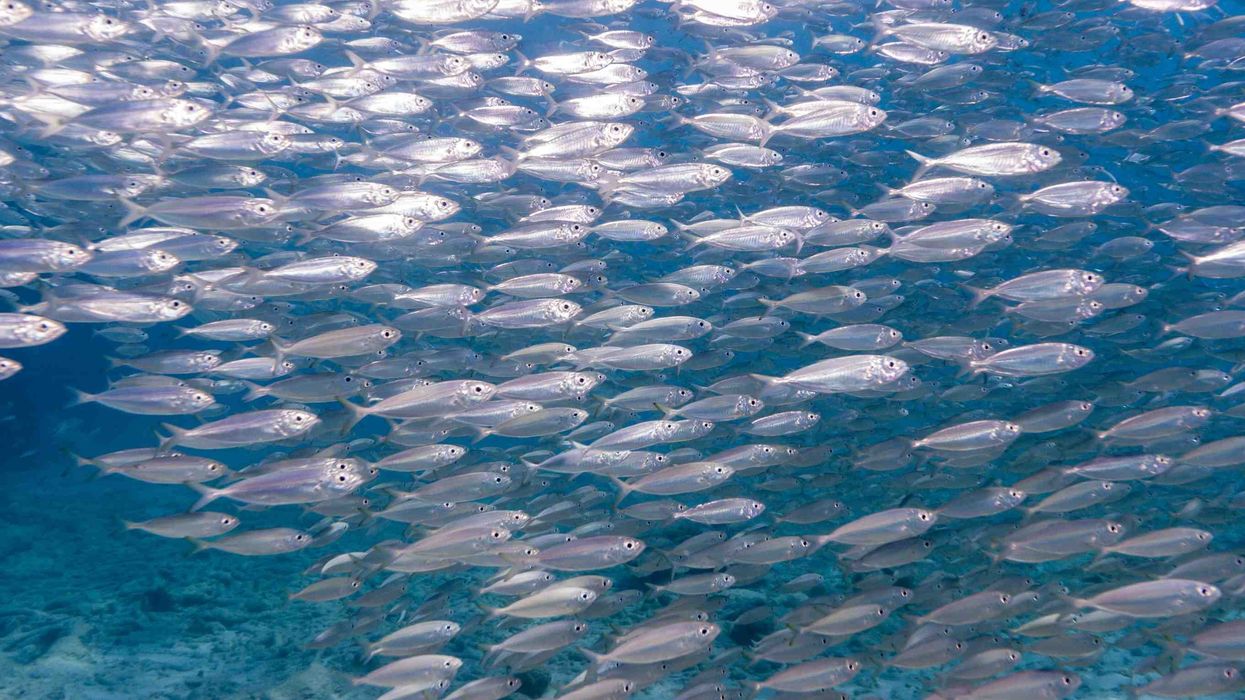The tarakihi fish is a wonderful fish that can be used in many dishes. Here is some interesting information about this lovely little creature.
The tarakihi lives up to its name of 'the jewel' by being so beautiful and eye-catching with its bright colors, long fins, and an elegant shape which curves toward the top like a crown. Tarakihi fish are one of the three types of native freshwater fishes found in New Zealand and is New Zealand's second-largest freshwater fish.
New Zeland's tarakihi fishes live mainly in an inshore kelp habitat.
They can also survive near coastal areas where rocky outcrops provide shelter from waves during storms or high tides as well as underwater rock pools which offer breeding sites for adult tarakihi. Younger ones cannot breed until they reach at least 8 in (20 cm).
If you're lucky enough to catch some tasty fresh-caught tarakihi, please remember not to throw them back. Some people consider them to taste similar to salmon, which is another type of fish, making it a popular commercial catch.
They are usually fried and eaten as an appetizer or served with rice for dinner.
They have fins on their backs and rounded mouths with sharp teeth to catch prey such as anchovies or small shrimp-like creatures called krill. To keep themselves from drying out when they swim near the surface where water evaporates quickly, this species stores saltwater within its scales by osmosis.
In the '50s, tarakihi fish were introduced to New Zealand waters in an attempt to create a more sustainable fishing industry for commercial and recreational fishermen.
While at first, it seemed like New Zealand's new fish would be beneficial for fishermen and consumers alike, they soon began to notice that there were simply too many of these small bony fishes. As their population grew out of control so did their ecological footprint.
For more relatable content, check out these mutton snapper facts and walleye fish facts for kids.
Tarakihi Fish Interesting Facts
What type of animal is a tarakihi fish?
The silver-gray Nemadactylus macropterus is New Zealand's second most populated fish and is a very crucial source of income for commercial and recreational fishermen.
What class of animal does a tarakihi fish belong to?
The Nemadactylus macropterus belongs to the class Actinopterygii. They have a peculiar blue-green sheen shading across their body length and they belong to the Cheilodactylidae family.
How many tarakihi fish are there in the world?
Estimates have varied from one to many thousands but overall records show an average number at between 10-100 million individual specimens worldwide.
Where does a tarakihi fish live?
New Zealand tarakihi is a small species and a popular commercial catch with a band between the head.This fish primarily dwells on sandy bottoms close to eelgrass beds and seaweed forests where they feed off snails called piddocks which are their primary food source when young.
What is a tarakihi fish's habitat?
Originating in the deep waters of New Zealand, this beautiful blue-white colorer is considered just another native species that is a popular commercial catch. This fish was actually first found in Australia's Great Barrier Reef before being spotted for the second time near Hawaii’s Hanauma Bay.
Who do tarakihi fish live with?
New Zealand tarakihi is a tasty little tropical species that is primarily found among the Polynesian islands in groups or pairs. Smaller than most average-sized reef dwellers such as lionfish and stone scorpionfish, these fishes spend their time swimming around reefs looking for food to eat.
They use their star-shaped mouths to suck up the food available including planktonic matter.
How long does a tarakihi fish live?
Silver-gray tarakihi fishes of the Cheilodactylidae family are gray with a blue head along with a distinctive black band. They are known to live up to 20 years.
Even the oldest of them are white on the belly and will eventually succumb and die despite their age due mostly because they are prey fish. This means that they have no defense mechanisms against predators like bigger predatory fishes or humans who might want to eat them for dinner.
How do they reproduce?
New Zealand's tarakihi fish are a little bit different than some other types of fish as they are white on the belly with a peculiar silver and white dorsal fin. They lay eggs in the sand after spawning which then hatch into larvae and metamorphose into adults.
What is their conservation status?
The Nemadactylus macropterus fish of New Zealand have a body of blue-green sheen shading and they have a conservation status of Least Concern.
Tarakihi Fish Fun Facts
What do tarakihi fish look like?
Tarakihi fish can be identified easily by looking at their striking coloration. They are mainly light yellow-white in shape but marked periodically along either side or near its tail fin with bluish streaks extending from a darker stripe running across its forehead right up over top each eye. This almost looks like someone has drawn penciled eyebrows on them!

* Please note that this is an image of a redhead cichlid. If you have an image of a tarakihi fish please let us know at hello@kidadl.com.
How cute are they?
Tarakihi fish are a type of small reef-dwelling groupers. Their bodies are gray with a blue head and dorsal fin. They have an undeniable charm that will make you want to take one home with you.
How do they communicate?
Tarakihi fishes endemic to New Zealand and the south of East Cape communicate with each other in stunning ways with the help of their medium to firm sheen shading to silver-white bodies.
For example, some species of tarakihi will mimic the sound of hermit crabs to lure them away from their shells so they can be eaten by other predators.
Tarakihi fish also communicate with each other by releasing a chemical that is passed through the water. They have a band between the head adjacent to nares which release molecules as they exhale to let others know where food may be found or when predators are nearby.
This organ has been identified in many species of sharks and rays too.
How big is a tarakihi fish?
These fishes are known for their vibrant head colors, dorsal fin, and long, flat bodies that enable them to hide in the sand. They can grow up to 25 in (60 cm) in length.
How fast can a tarakihi fish swim?
Tarakihi fish are known for their fast speeds because they can swim up to 20 mph (45 kph).
How much does a tarakihi fish weigh?
Tarakihi is one type of freshwater fish common around New Zealand and is known to grow anywhere between 2-10 lb (1-5 kg).
What are the male and female names of the species?
Male and female fish in this species, Nemadactylus macropterus, both go by the name tarakihis.
What would you call a baby tarakihi fish?
The tarakihi fish is known as a tarakihi baby because of its young, tiny size.
What do they eat?
The robust yet elegant tarakihi fish has been studied for its diet as it eats a variety of food types including shrimp, lobster, and crab. It will happily munch on anchovies too.
Are they poisonous?
Tarakihi fish are not poisonous, but it is still better to be cautious if one bites you or if you eat one.
Would they make a good pet?
Tarakihi fish are not only popular as a pet, but they also regularly make appearances in recipes.
They are often called pink snapper and can be found at aquarium stores or specialty seafood markets where their range of colors is available for purchase. A few things you should know before purchasing them include the fact that these fish may require an extra-large tank to swim around comfortably.
It is important to feed them twice daily with live food such as brine shrimp, bloodworms, krill, and pieces of raw tuna meat while avoiding foods like peas which will cause digestive problems.
Did you know...
Tarakihi fishes belong to the Cheilodactylidae family and are notoriously resilient when it comes to adaptation. These deep-sea dwellers have a unique, slick body that does not absorb toxins and can withstand the most extreme environments on earth including boiling water temperatures or freezing cold ones.
Is the tarakihi fish endemic?
Yes, these fishes are endemic and common around New Zealand. Tarakihis thrive off coastlines with salt water or fresh river systems around New Zealand. These small but voracious carnivores have a high protein content that's very healthy for you when eaten regularly while being low in fat at only 2% per serving size.
What kind of fish is tarakihi fish?
Tarakihi fish is a type of medium to firm white fish that inhabits the lakes and coastal waters in New Zealand and is a celebrated commercial catch.
Tarakihi fish are an excellent food option for both human consumption as well as fishing bait due to their high-fat content which makes them perfect for cooking on the barbecue or for catching prey like colossal squid.
Here at Kidadl, we have carefully created lots of interesting family-friendly animal facts for everyone to discover! Learn more about some other fish from our wolffish facts and spiny dogfish facts pages.
You can even occupy yourself at home by coloring in one of our free printable Tarakihi fish coloring pages.









